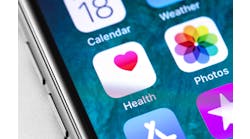UCSD CMIO: How We Prepared for April 5 Clinical Note-Sharing Deadline
The 21st Century Cures Act’s information blocking provisions require all clinical notes to be shared with patients beginning April 5, with few exceptions. Brian Clay, M.D., a hospitalist and chief medical information officer at UC San Diego Health (UCSD), has some suggestions after leading his organization’s roll-out of ambulatory open notes in May 2018 and inpatient open notes in the fall of 2020.
Speaking during a March 23 meeting of the nonprofit OpenNotes organization, Clay said UCSD’s experience with sharing clinical notes in the ambulatory setting tracks closely with the experience of other health systems. When you survey physicians about this beforehand, the common theme is that the physicians think it will be more work for them to write the notes and that that they will have to think about terminology and medical jargon, he said. They also worry that they are going to get a lot of questions from patients about sharing notes. But when you survey them after go-live, they'll say they didn’t really change how they wrote their notes all that much, and they didn't get a lot of questions from patients. “So go-live tends to be a non-event, which is actually what you want,” Clay said. “You want to provide this upside benefit to patients with little to no intrusion to the clinicians.”
“We've been slow to bring open notes to the hospital setting,” Clay said, “but the 21st Century Cures Act is catalyzing this for everyone at the same time. I think that although the lessons we've learned from outpatient open notes can be generally applied to the inpatient setting, there are some nuances that are different in the hospital.” Clay reminded other healthcare executives that this is a big exercise in change management. “What will benefit you the most is educate your note authors on what they can do, what they can't do, what the law is, and what the benefits are.”
When the information-blocking rules were initially published, it wasn’t immediately clear to those in the informatics community how broad the requirement was. Did it just apply to physician notes? But in January 2021, ONC published a couple of FAQ documents that made clear that the term clinical notes is broadly defined. “It’s not just notes written by physicians,” Clay said, “so this put on the table a very different approach that needs to be taken. We couldn’t just take whatever we did for outpatient open notes and transplant that to the hospital setting easily.”
Hospital in-patient notes are different, Clay noted, because there's more team-based care. There are surgeons and anesthesiologists, social workers, pharmacists, dieticians, physical therapists, and nurses all writing clinical notes. Also, a hospitalization that spans days or weeks could have dozens or hundreds of notes. How do you present that to the patients?
UCSD began the inpatient journey in May 2020 by sharing discharge summaries. Like the ambulatory notes, Clay said, turning that on was a complete non-event. “We saw very few instances of people opting out of the sharing while they were writing the notes, and it wasn't really a big deal.”
In November, which was the original ONC deadline before the pandemic pushed it ahead to April, UCSD turned on sharing of clinical notes for attending physicians in all clinical areas, outpatient, and inpatient — and inpatient includes perioperative and the emergency department. Phase two involves everybody else — residents, fellows, our care coordinators, nutrition, nursing, etc.
There also are issues about timing of the release of the hospital notes. “We are not releasing those notes in real time,” Clay said. We are sharing notes on patient discharge from the hospital setting. That's where we're starting.”
As with the ambulatory care notes, UCSD did not see any big uptick in patient concerns or questions following the release of the inpatient physician clinical notes in November.
Two weeks from now they will broaden the effort out beyond the attending physicians. Clay has been giving presentations to various stakeholder groups, including organizational leadership and governance, nursing, pharmacy, therapy services, and the patient family advisory group, to let them know that patients who are using the portal are going to start seeing their notes and what it means. “Most of these folks are kind of tentatively supportive of the idea,” he added. “People generally are in favor of the idea, but immediately think of the case where it could go sideways. And that's very natural and very normal. And part of my job as the chief medical information officer is to validate those concerns, but also to reassure that those are unusual situations, and that we have ways to communicate that.”
Clay said he reminds everybody that this is not really new. The patients have had a long-standing right to their medical records that predates the 21st Century Cures Act, and even predates the HIPAA Privacy Rule, which is now 20 years old. “They've had this right for a long time, and our medical records department gets about 500 requests through MyChart every month for a copy of their record. And what they get is a PDF of all their notes and other content in about 48 hours. So people are not asking to pull more data or less.”
Note writers are allowed to withhold notes for a few reasons. One is if the clinician thinks it could cause patient harm and the other is if there is a privacy concern. At UCSD, they will be required to detail the reason in the EHR, he said. “If somebody doesn't want to share notes, they'll find a way,” Clay said, adding they would start to use analytics to look at the practice patterns of their note authors — who is sharing, who is withholding, and why they are doing that.
Finally, Clay reminded listeners, you need to look at where all your clinical notes are coming from because not everything is entered directly in your EHR. Some are entered in third-party systems, whether it's for GI/endoscopy procedures, or radiation oncology. “You may have specialty systems that send notes over to your core EMR via an interface,” he explained, “and if you don't have the opportunity to have an author withhold a note for the harm or privacy exception, then you need to be aware of that. You need to educate those users. And there's usually a way you can work it out.”


